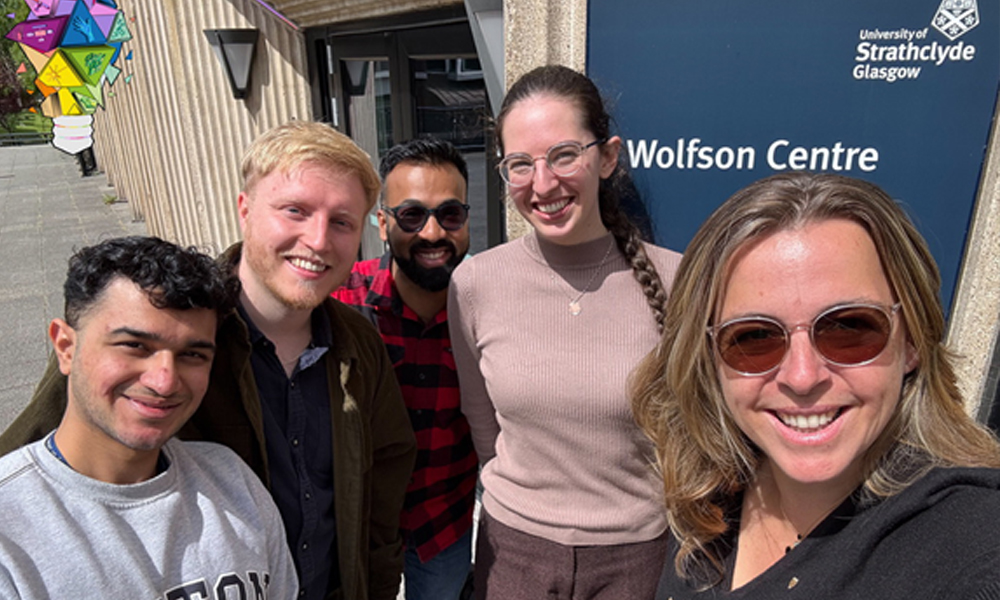
When Dr. Akhil Kallepalli — then a postdoctoral researcher in Professor Miles Padgett’s Optics Group at the University of Glasgow — decided to pursue research time in Professor Andrew Forbes’ Structured Light Laboratory at the University of Witwatersrand in 2023, he turned to the SPIE Early Career Researcher Accelerator Fund in Quantum Photonics. Simultaneously, Kallepalli applied for extra funding from the Scottish Universities Physics Alliance (SUPA). “I told both organizations what I was doing,” he says, “and the SPIE application supported my request for the SUPA travel grant. The SUPA travel grant, serendipitously, was assessed by my current head of department at the University of Strathclyde; he saw my CV and reached out to invite me to apply as a Chancellor's Fellow in Strathclyde’s Department of Biomedical Engineering.” That role, which Kallepalli took on just over a year ago, offers reduced teaching responsibilities to allow for research, as well as fast-tracking Kallepalli from an assistant to associate professor. At Strathclyde, he also heads up his own lab of graduate students whose work focuses on clinical translation of classical and quantum optics. “So applying for the SPIE award led me not just to a productive relationship with Andrew,” notes Kallepalli, “but to my current position as well.”
Kallepalli always knew he wanted to be an academic in optics: “I did satellite-based image analysis for my bachelor's, airborne hyperspectral imaging for my master’s, biophotonics for my PhD, and fundamental physics for my postdoc.” In 2020, he had recently returned from Photonics West when he started working with Padgett. “I focused on biophotonics and biomedical optics as they related to Miles’ interest in general and quantum optics,” he says. “I also knew that Miles had wonderful relationships with colleagues all over the world, and the nexus of clinical translation — my particular interest — of classical and quantum optics — Miles’ and Andrew’s areas of expertise — is something that really stood out to me. Naturally, I gravitated towards Andrew Forbes.” Today, Kallepalli’s time in Forbes’ Structured Light Lab continues to generate ongoing collaborations.
“Collaborations are invaluable,” says Kallepalli. “I learned early in my career that most innovations happen at the nexus of two research fields. If you're able to find solutions to problems in a novel way, you've got a very, very good balance there that you can play with. The collaborations that Andrew and I established during my time at his lab are ongoing: We're trying to understand how quantum imaging can find a place in biomedical diagnostics. I plan to send a couple of my PhD students to his group next year, and he's hoping to have a couple of his PhD students visit my group. I love to find ways of overlapping our areas of research so both of us can work on individual problems but solve something we couldn't do just by ourselves.”
By the end of this year, Kallepalli will have five PhD students in his lab whose projects encompass Fourier ptychography microscopy for malaria imaging; leveraging 3D-printing to create microscopy hardware; exploring functional near-infrared spectroscopy for brain imaging; understanding glioblastoma tumors’ microenvironment; and pursuing the project with Forbes, which looks at the interaction of biological tissue with single photons. “What we are trying to do is understand how light interacts with biological tissue and where it can best be applied,” says Kallepalli of his team’s focus. “These explorations are based on collaborations, connections, and professional networks, and we take those tools to different people's labs, so the projects are quite diverse. In my team, each individual student has about a 10% overlap with the others, so we’re perpetuating a culture of collaboration. If everybody's project has an overlap, they naturally work together.”
That sense of creating a collaborative environment, mentoring young researchers, and facilitating connections is a role that Kallepalli embraces. “Miles mentioned to me a long time ago that the people you end up working with are almost more important than the problem you're trying to solve, because if the people are fantastic and the culture is great, you will solve any problem as best as is possible.”
Kallepalli’s recently returned from a visit with Professor Joseph Culver’s group at Washington University in St. Louis, interested in what innovations might be possible to improve the depth resolution of the functional infrared-spectroscopy systems that that group specializes in. (Notably, Culver’s lab includes 2025 SPIE-Franz Hillenkamp Postdoctoral Fellow Morgan Fogarty). There will be follow-up trips, alongside the PhD student who is part of the collaboration between Kallepalli and Culver’s teams: “We want to build a functional near-infrared spectroscopy system at Strathclyde to study the rehabilitation process of stroke patients.” And, per his MO, Kallepalli wants to ensure emerging researchers are involved and engaged.
“My students all do outreach,” he says. “They submit conference papers. My first PhD student just got a grant to attend a conference in Manchester. He went to the SPIE Biophotonics Summer School this year, and he’ll spend two months in South Africa next year working with my colleague Professor Pieter Neethling at Stellenbosch University. I met Pieter on a visit to Stellenbosch in 2023 and had a wonderful time engaging with him; now he's going to host one of my students, and one of his students is going to visit my lab in exchange.” Kallepalli pauses, but only for a moment. “It is my responsibility to make these opportunities available to the students,” he says, “to make the right opportunity for the right student available at the right time, and to provide opportunities for my students that allow them to have the best possible experience.”